Welcome to Homebrew Horrors, a series where you get a set of brand-new homebrew monsters, plus lore and worldbuilding details that you can use to anchor them in your own D&D setting.
The time has come for the warriors of your campaign to don armor, unsheathe their weapons, and ride to war upon the backs of hulking monsters. This installment of the Homebrew Horrors series gives you a brand-new template that you can apply to any creature large enough to carry other creatures. Additionally, it provides two new homebrew monsters that you can use in your D&D campaign: the white dragon of war and the war mammoth. These monsters were specifically chosen to enhance your Icewind Dale: Rime of the Frostmaiden campaign, but can be used in any adventure that takes place in an arctic environment.
Templates and Challenge Rating
Just like the templates provided in the Monster Manual, these templates don’t consistently increase a creature’s challenge rating. This article gives rough guidelines on how much each template will increase a creature’s challenge rating, but the increase in power is much more significant for low-CR creatures than it is for high-CR creatures. In order to accurate discover the creature’s new challenge rating, you’ll need to enter the creature’s new statistics into the monster creation guidelines in the Dungeon Master’s Guide.
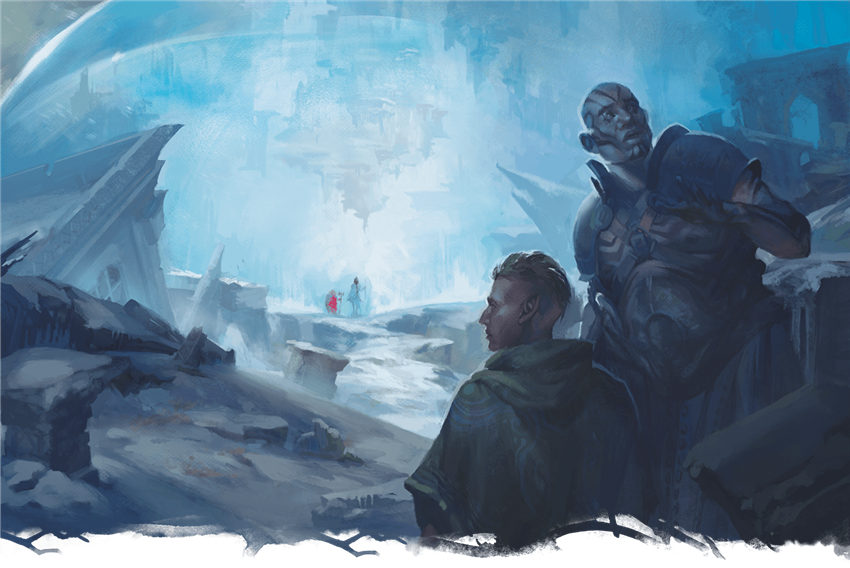
New Template: War Monster
War monsters are domesticated beasts, allied dragons, or tamed monstrosities that have been equipped with back-mounted carriages large enough to carry warriors into battle. Depending on the creature’s size, and the size of their riders, they can carry as many as a full platoon of soldiers. While this template usually only applies to creatures with beast-like anatomy, it can be applied to more alien creatures like aberrations, fiends, or oozes at the Dungeon Master’s discretion.
Challenge. The challenge rating of a war monster doesn’t change when this template is applied. However, a war monster is frequently accompanied by other creatures on its war carriage. These creatures are its allies, and you can use the D&D Beyond Encounter Builder to see how powerful an encounter with this war band is compared to your party.
War Carriage. This creature carries a custom-made carriage that allows a number of soldiers to fight from, and be transported on, the back of their carrier. This carriage is attached to the creature by a number of leather straps and harnesses which, if severed, cause it to tumble off the creature’s back. Each of the straps of this war carriage are Tiny objects with AC 18 and 10 hp and immunity to poison and psychic damage; most war carriages are attached by four straps connected to the monster’s limbs.
A Huge creature wearing a war carriage can carry up to 4 Medium creatures or 1 Large creature. A Gargantuan creature wearing a war carriage can carry up to 16 Medium creatures or 4 Large creatures, or 1 Huge creature. The platform also has space for 1 additional Medium creature to drive the monster, or use its weaponry if the monster is intelligent and needs no driver.
Mounted Weaponry. Creatures that are Huge or larger can have a number of weapons mounted upon its saddle or carriage. Choose one of the following options.
|
Weapon |
Minimum Creature Size |
Attack and Damage |
|
Mounted harpoon crossbow (an oversized heavy crossbow with a long bolt attached to a 60-foot length of rope). This Tiny object is mounted on railings and takes up no space. |
Huge (4 crossbows), Gargantuan (16 crossbows) |
Ranged Weapon Attack: +5 to hit, range 60 ft., one target. Hit: 5 (1d10) piercing damage and the target must succeed on a DC 13 Strength saving throw or be harpooned. A harpooned creature takes 3 (1d6) piercing damage at the start of each of its turns and can’t move more than 60 feet from the war monster. If a creature on the war platform succeeds on a Strength contest against the target as an action, it can move the target up to 30 feet closer to the platform. The creature can repeat this saving throw as an action, ending the effect on a success. |
|
Ballista (a large siege crossbow). This Large object takes up the space of 1 Large creature or 4 Medium creatures. |
Huge |
Ranged Weapon Attack: +6 to hit, range 120/480 ft., one target. Hit: 16 (3d10) piercing damage. The ballista can be attacked independently of the war carriage. Its stats are found in chapter 8 of the Dungeon Master’s Guide. |
|
Trebuchet (a massive siege catapult that hurls missiles from incredible range). This Huge object takes up the space of 1 Huge creature, 4 Large Creatures, or 16 Medium creatures. |
Gargantuan |
Ranged Weapon Attack: +5 to hit, range 300/1,200 ft. (can’t hit targets within 60 feet of it), one target. Hit: 44 (8d10) bludgeoning damage. The trebuchet can be attacked independently of the war carriage. Its stats are found in chapter 8 of the Dungeon Master’s Guide. |
Other siege equipment from chapter 8 of the Dungeon Master’s Guide can be mounted on a war carriage, at your discretion.
New Monster: Adult White War Dragon
White dragons are the most bestial and instinct-driven of the true dragons, making them easy to press into servitude. They are, however, still intelligent creatures—only evil beings would enslave another sapient being. Frost giants, frost druids, devotees of the icy archdevil Levistus, or worshipers of Auril the Frostmaiden, are the perfect perpetrators of such an evil act. Other creatures may beseech a white dragon for its service, knowing full well that the dragon may decide that its service is complete if it suffers ill treatment, an insufficient cut of the spoils, or whenever a fickle mood strikes it—especially in the heat of an uncertain battle.
An adult white dragon can carry four Medium creatures on its back, and often works to ferry a unit of elite soldiers into battle. It may also swoop over a battlefield, annihilating enemy combatants with icy blasts while a ballistician on its back rains deadly ballista bolts upon enemy defenses.
The adult white war dragon is a fearsome CR 13 monster often found manned by a single veteran ballistician who aims the ballista mounted on its back at fortifications or swathes of enemy soldiers. See its full statistics and add this monster to your game using the D&D Monster Homebrew tool!
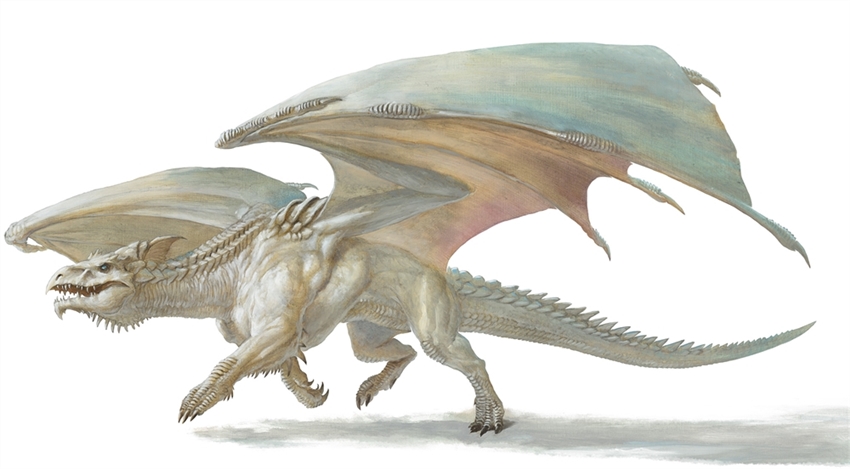
New Monster: War Mammoth
Herds of wooly mammoths plod across the icy fields of Icewind Dale. The people of the Reghed tribes hunt them for meat, fat, bones, and warm fur, and some frost giants even tame them and use them as mounts. Straddling the line between humankind and giantkind, some exceptional goliath clans have learned the secrets of domesticating these mastodons, and have constructed carriages that sit upon their backs so that goliath war parties may ride them into battle.
The war mammoth is a CR 6 monster typically mounted by a crew of four goliath berserkers and driven by one goliath tribal warrior. See its full statistics and add this monster to your game using the D&D Monster Homebrew tool!
What kind of homebrew monsters have you made for you game? Learn how to make homebrew horrors of your own in the D&D Monster Homebrew tool with Design Workshop: Monsters!
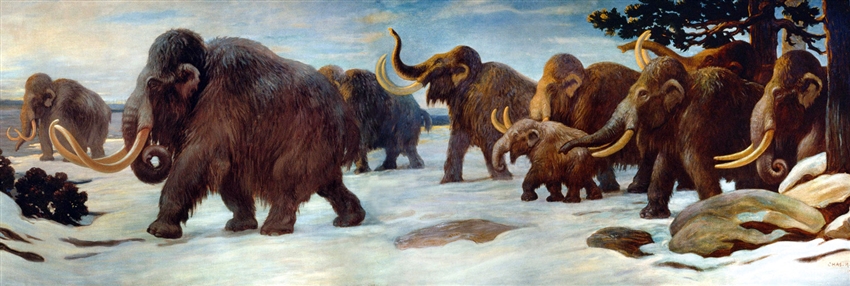
Create A Brand-New Adventurer Acquire New Powers and Adventures Browse All Your D&D Content
 James Haeck is the lead writer for D&D Beyond, the co-author of Waterdeep: Dragon Heist, Baldur's Gate: Descent into Avernus, and the Critical Role Explorer's Guide to Wildemount, a member of the Guild Adepts, and a freelance writer for Wizards of the Coast, the D&D Adventurers League, and other RPG companies. He lives in Seattle, Washington with his fiancée Hannah and their animal companions Mei and Marzipan. You can find him wasting time on Twitter at @jamesjhaeck.
James Haeck is the lead writer for D&D Beyond, the co-author of Waterdeep: Dragon Heist, Baldur's Gate: Descent into Avernus, and the Critical Role Explorer's Guide to Wildemount, a member of the Guild Adepts, and a freelance writer for Wizards of the Coast, the D&D Adventurers League, and other RPG companies. He lives in Seattle, Washington with his fiancée Hannah and their animal companions Mei and Marzipan. You can find him wasting time on Twitter at @jamesjhaeck.








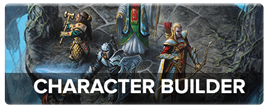
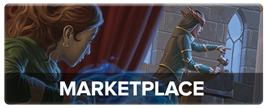
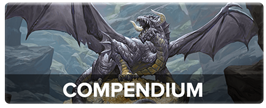
-
View User Profile
-
Send Message
Posted Sep 10, 2020Probably more ideal in a siege situation where most spells don't really add anything to taking down a wall or getting loads of people over it
-
View User Profile
-
Send Message
Posted Sep 10, 2020Some times I love reading the comments, almost as much as the article itself.
You, Sir, are awesome!
-
View User Profile
-
Send Message
Posted Sep 10, 2020So if a Gargantuan creature with War Carriage can carry a Huge creature, can that Huge creature also have a War Carriage with a Large creature on it, and can that Large creature still have a Medium creature riding it and a Small creature on top of that?
I feel a pyramid of death war creature campaign coming on…
-
View User Profile
-
Send Message
Posted Sep 10, 2020To be fair, the ship vehicle rules don't really specify this either; I think it's safe to assume that the space occupied by the weapon also includes some nominal amount of spare ammunition, e.g- 10 bolts for a Ballista, and any additional ammunition requires you to sacrifice more space to accommodate it, or needs to be carried by whoever is operating the weapon.
The interesting one is the harpoon crossbow; 20 spare bolts seems perfectly reasonable, but to get the rope back you'd need to reel it in which should take at least a full action, assuming no target is currently harpooned, and if one is harpooned it should be more difficult (Strength checks, since the target has weight?). So for a short battle these probably are one and done, but you could always have multiple.
As for MDC's earlier remark about ground stability, I'm not sure if that would really be an issue? We're assuming a War Carriage platform on the back of a Huge or Gargantuan creature, so it should have the space for these weapons to be very firmly affixed. If I were DM'ing I'd maybe assume that the creature itself has to be stationary or gliding to fire a weapon accurately/safely, so can't be attacking itself in the same turn, otherwise maybe give a penalty to the attack roll and/or roll to see if the weapon is damaged and unusable as a result of a risky shot?
Loads of options, I think the key thing with vehicle and war monster rules is that they're a jumping off point to get you started, and really it partly comes down to whether the players or enemies are the ones operating these anyway (just handwave ammo if it's an enemy beastie the players need to take down).
-
View User Profile
-
Send Message
Posted Sep 10, 2020So the harpoon crossbow is just about useless if the creature it’s mounted on can’t fly. You can counteract the dragging effect just by walking. If your walk speed is <30 than you can slowly, slowly be dragged in.
If the creature can fly, and the target can’t, then you could technically impale it and then just fly off. Doesn’t seem too useful otherwise.
-
View User Profile
-
Send Message
Posted Sep 10, 2020The straps having their own stats seems a little unnecessary, but I like this overall! It reminds me a lot of the ogre howdah.
-
View User Profile
-
Send Message
Posted Sep 10, 2020Am I the only one here who saw that a Gargantuan creature with a war carriage can carry four Large creatures and thought of a Gargantuan creature holding four Ogre Howdahs holding four Small creatures each? It's backpack-ception
-
View User Profile
-
Send Message
Posted Sep 10, 2020Each ogre and each of their passengers have crossbows (the small creatures have light crossbows, everyone else is heavy). The driver spot gets to operate a harpoon crossbow. They’re on the back of a storm giant with the enlarge/reduce spell. The giant also has a crossbow. They all take the ready action. You come within 60 feet and suddenly 22 bolts of various types impale you. Assuming they all hit and everyone has 10 Dexterity, that’s an average of 99 damage. And now you can’t leave.
-
View User Profile
-
Send Message
Posted Sep 10, 2020Gonna use this to make me a frost giant Bard with a gnome-driven polka suit!
-
View User Profile
-
Send Message
Posted Sep 10, 2020https://en.wikipedia.org/wiki/Trebuchet#:~:text=A trebuchet (French%3A%20tr%C3%A9buchet),manpower%20to%20swing%20the%20arm.
The above link is from wikipedia about Trebuchet, when posting I was thinking of a TV show documentary about building them and using tons of rock in the counter weight.
Why do I think some basic things such as this is important? In general I know I do not know a lot of stuff and I have met people that do not know where hamburger comes from as well as not knowing how ducks reproduce and bear young. So often now I try and provide more explanation when building things and not just say "PFM" or Pure Fracking Magic so as to help out those who may not have as good a grasp of things in areas I understand.
Another area you touch on is solid ground to fire from which is very important with the forces involved.
You generally have the most issues when scaling up and down to a great extent, ie you put wheels on a small boat might be fine but putting wheels on the USS Iowa Battleship or a Super Tanker you have big problems, like wise you put wheels on an atom of hydrogen you have a very small big problem. So knowing where to draw the line is important.
Younger Me: I can say that in the past I have done things such as this when GMing and playing and at times it has been fine but other times it has lead to disruptions to the game. So now I try and identify areas in products that might cause problems in my game and move to change them before they can cause issues.
MDC
-
View User Profile
-
Send Message
Posted Sep 10, 2020Imagine if someone used these templates for an Urban Arcana-style campaign. Look me in the eyes and try to tell me, with a straight face, that a red dragon with rocket pods and heavy machine guns strapped to it wouldn't be the most metal creature ever.
-
View User Profile
-
Send Message
Posted Sep 10, 2020Sure, and they shouldn't be ignored, but part of the issue I think with catapults on the ground is that there are limits to how well you can fix them to the ground; you could drive stakes into the ground directly, or use straps/ropes to do so at a distance (distributed over a larger area) but the force to hurl a boulder will eventually rip those from the ground. Piling weight on is simply easier. Catapults mounted on a tower of a castle though could use iron hoops embedded into the stonework, avoiding that problem.
Catapults (mangonels in particular) have been used historically on ships, and the advantage to firing them from a ship is that you can design a ship's deck with the same kind of anchor points as the castle tower, i.e- metal loops to tie them down to, usually in such a way you can still turn to aim easily (i.e- a single loop of rope through two hoops so lengthening one side shortens the other).
I'd think the same would be true of a War Carriage on a large creature; the platform would need to be sturdily built, and well secured to the creature, and should have the necessary mounting for securing any siege weapon you want to put on there. The creature itself could also be a factor; this is why I mentioned maybe having the creature go stationary or glide when the siege weapon is being fired, as this can represent a dragon levelling out to give a better shot with a ballista, or a gargantuan beast with a trebuchet hunkering down to brace against the force of the shot.
I think it makes reasonable enough sense to work both thematically and realistically; we don't have many real comparisons we can make, but elephants have been used in the past to carry ballistas that could be fired from their backs, so it's not without precedent. Of course you'll need to decide for yourself in your games whether a tebuchet makes sense on a flying creature for example (probably not), but a Dragon Turtle used as a naval vessel could justify it, as the shell could maybe take the stress of firing without any extra reinforcement.
-
View User Profile
-
Send Message
Posted Sep 10, 2020Fox One!
-
View User Profile
-
Send Message
Posted Sep 11, 2020I have a few I'm proud of:
A CR 6 mage slayer (based on the monster slayer ranger)
An undead troll that releases explosions of necrotic energy
A Stalker of The Night, a Gloomstalker/assassin mix that is super deadly
And a few others. Check them out by filtering by user and selecting "Thunder5077"
-
View User Profile
-
Send Message
Posted Sep 11, 2020I have a few I'm proud of:
A CR 6 mage slayer (based on the monster slayer ranger)
An undead troll that releases explosions of necrotic energy
A Stalker of The Night, a Gloomstalker/assassin mix that is super deadly
And a few others. Check them out by filtering by user and selecting "Thunder5077"
-
View User Profile
-
Send Message
Posted Sep 11, 2020If there was a merchant who sold these, how much gold would you say these would cost?
-
View User Profile
-
Send Message
Posted Sep 11, 2020I generally do not have an issue with smaller siege engines and after I read the trebuchet I had realized that the info I had seen was for larger sized units, but even then their is a lot more involved then attachment to the ground (preping the ground for repeated fire of the weapon).
Also in general just making the whole thing from metal and or magical material may not solve the issues. But if an author provides a idea then explaining how that idea can be made to work in a game is generally better. Why? You are trying to provide guidance to GM's and players on how to run a game and be an example of how to introduce ideas into a game. If you simply say "Magic Baby" is the answer the question from the players quickly becomes why cannot we use "Magic Baby" to solve our problems and only the GM can?
Note: I am no expert on D&D 5th spells but to me it looks as if I would use 2 wishes to make a trebuchet work as a weapon on a platform. One to nullify the forces and one to secure it to the platform. When explained that way IMHO it provides context to both GM's and players who want to use such devices in their games.
Have I seen this type of thing in real life? Yes about 4 years ago a group of people were talking about using lava (because lava did 20d6 damage a round) to build structures and how to make it happen. It was a spell to put the material in stasis then transport the blocks, then strengthen the blocks, then be able to renew the spells without them failing and all of the other stuff that went a long with the project. after talking about it I think the posters had a better idea as to what had to happen instead of just take the highest damage environment and place it in stasis for a trap and not plan for it lasting longer than a week (ie the players are only going to only be at the location for a week so that is how long it has to last).
Have I done the things above, yes I started gaming in 78 and have done lots of things (both positive and negative) while a GM and player and I look for was to make my gaming better (that can be dependent of the type of game and setting, ie a 1-3 week battle royal where all players are against each other and anything goes is a different set up vs a game to last a year or just create PC's for a module)
MDC
-
View User Profile
-
Send Message
Posted Sep 11, 2020Me: *Sees this article* "cool"
3 seconds later:
"I know what I must do..."
What I do:
- Purple worm with guns
-
View User Profile
-
Send Message
Posted Sep 11, 2020nice
-
View User Profile
-
Send Message
Posted Sep 11, 2020yes